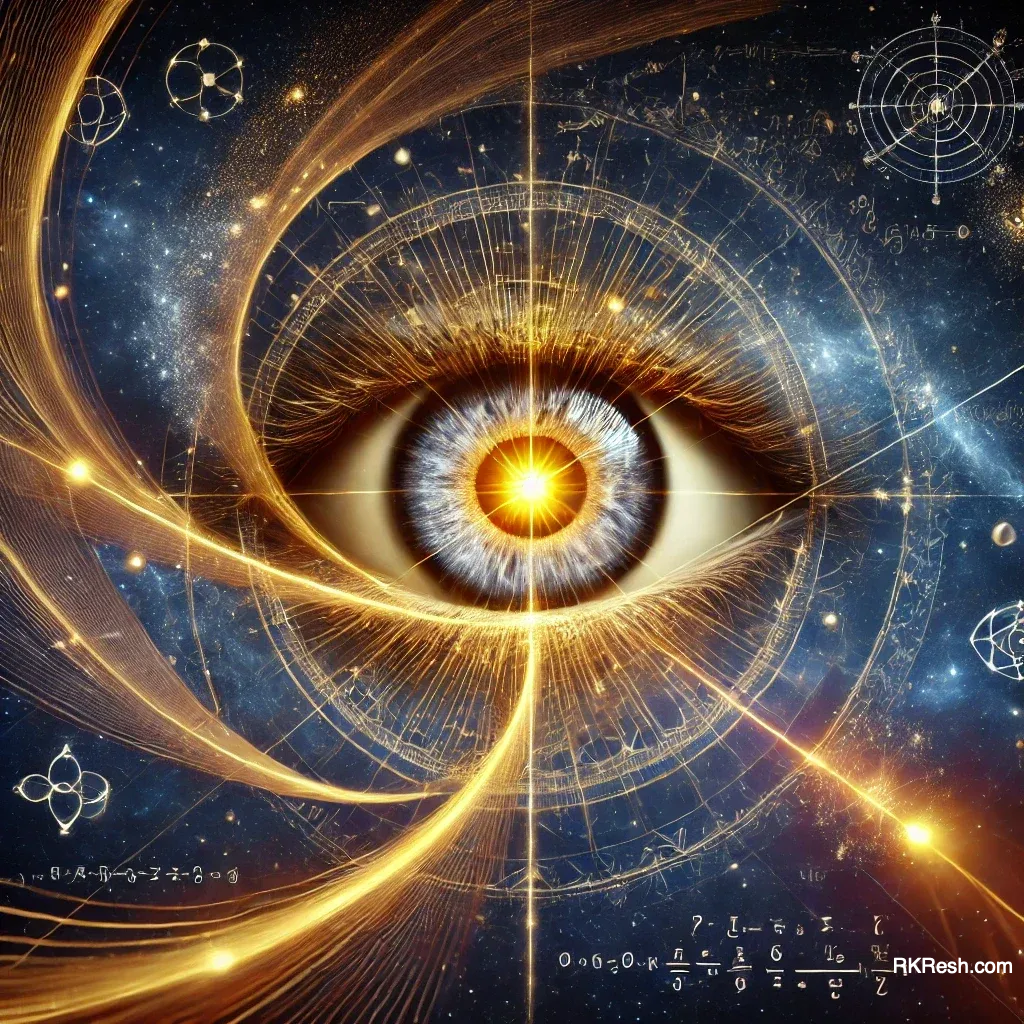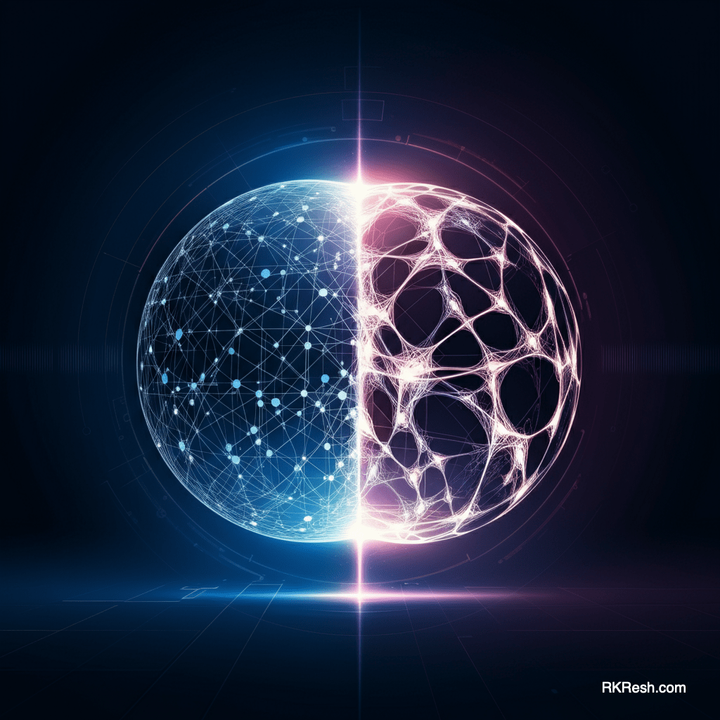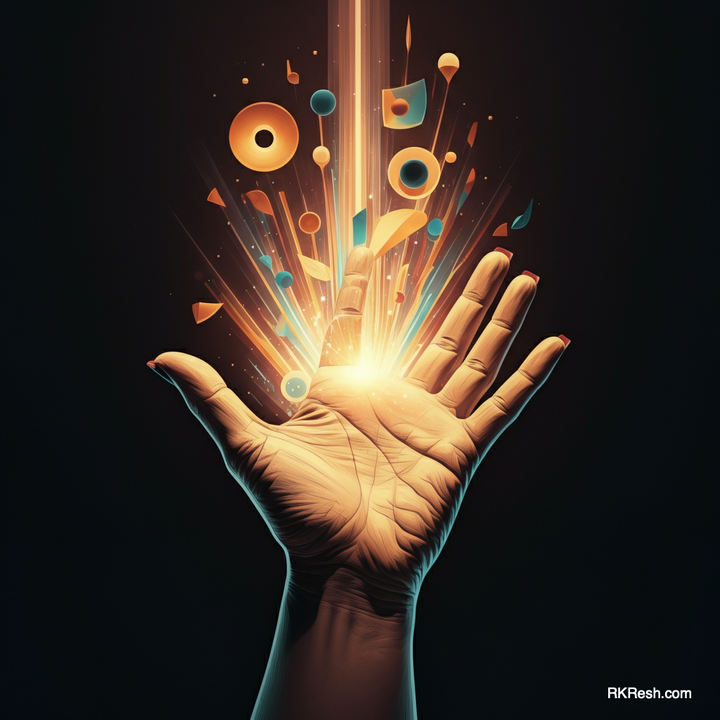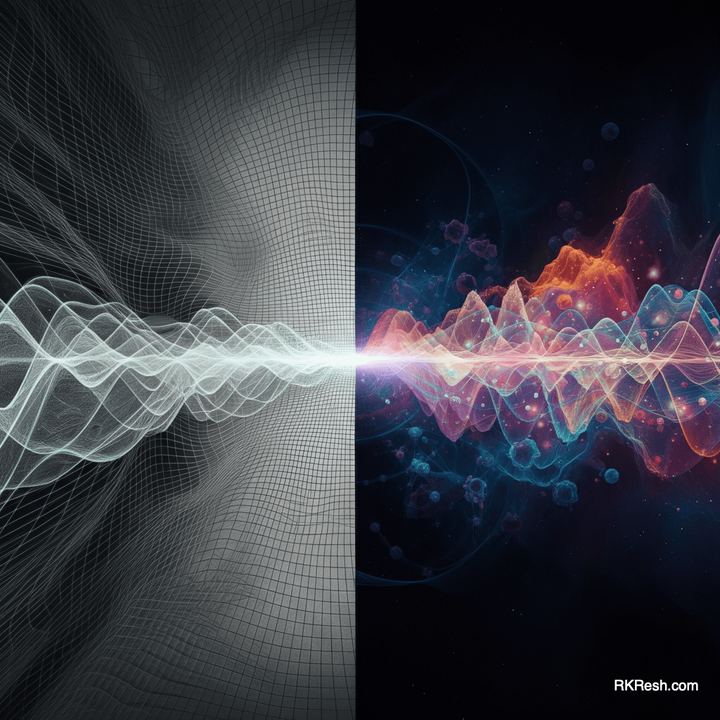Attention, Measurement, and the Nature of Reality—Tying It All Together
006 Dive into the profound interplay between attention and reality. From quantum mechanics to the vastness of human thought, this exploration unveils how focus may bridge the tangible and the unknown, shaping existence in ways both scientific and mystical.

Attention Series 006
In the previous article, I introduced the idea of attention as a fundamental force in the process of co-creation. This post brings together the key insights from the Attention Series so far, setting the stage for Part 2 of this exploration.
What is real? It’s a question that has danced on the edge of our consciousness for centuries, weaving through philosophy, science, and metaphysics like a single, unbroken thread. Every day, we engage with a world we call “real,” yet its very foundation remains elusive. Are we participants in reality—or its creators? Or both?
Embedded within this exploration is the silent yet profound interplay of attention. Attention guides us, shapes our perceptions, and perhaps, defines the boundaries of reality itself. What if this seemingly human capacity bridges the abstract architecture of the universe with our conscious experience? What follows is not just a discussion, but an invitation—to look closer, think deeper, and consider the extraordinary possibility that attention itself may be one of the connective tissues binding all things.
Quantum Mechanics Recap: The Observer's Role in Reality
Quantum mechanics, often described as the poetry of particles, has taught us strange truths about our universe. At its heart lies the infamous "observer effect," where the simple act of measuring or observing a quantum system changes its state. Electrons, for example, exist as probability waves until observed. Once measured, they "collapse" into a precise position—a phenomena both baffling and awe-inspiring.
My "poetry of particles" reminds me of Rumi's "Dance of the Atoms". This is Armand Amar's version of the poem.
This discovery unfolded into thought experiments like Schrödinger's cat, a paradox highlighting how observation influences outcomes. At first glance, it feels mechanistic—a quirk of quantum systems. But dig deeper, and the implications are profound. Could it mean that reality itself is contingent upon observation? And if so, what fuels the act of observation? Is "attention" more than a vessel for our consciousness?
Quantum mechanics demands that we place the observer within the framework of the physical world. It whispers of a reality that is unfinished, awaiting not only measurement but intention.
The Psychology of Attention and its Cosmic Implications
If physics addresses the mechanics of attention, psychology illuminates its human dimension. Attention directs our lives, deciding what we see, hear, and engage with in any moment. It determines what matters. Yet, attention is far from an infinite resource—it is selective, focused, and deliberate.
Cognitive science reveals how attention sculpts perception, creating "reality filters" unique to each individual. Neurologically speaking, attention modulates brain activity to enhance neural pathways aligned with what we focus on. It operates as a spotlight, weaving our subjective experiences into a coherent whole. Without attention, the world as we know it dissolves into chaos—sound without melody, light without form, and existence without meaning.
But ponder this for a moment. If attention shapes our perceived reality, could it also co-create the physical one? What if, just as quantum particles respond to observation, the universe subtly adjusts to the attentional currents we cast upon it? From the microcosmic processes of neurons to the macrocosmic movements of galaxies, could there be a link?
Interdisciplinary Links Between Attention and Reality
Here, the veins of science, philosophy, and art begin to merge. Across disciplines, we find echoes of attention as a central force in shaping existence.
Neuroscience
Neuroscientists speak of "meta-cognition"—awareness of one’s own thought processes—a self-reflective loop that itself requires directed attention. This recursive nature of awareness feels strikingly similar to quantum systems "observing" themselves into being. Might our brain be a microcosm reflecting universal patterns?
Philosophy
Existentialist philosophers like Heidegger spoke of "being-in-the-world," a state deeply tied to our attention toward existence. Object and subject, they argued, are not separate entities but entwined realities. To exist as conscious beings is to direct attention—to care, to wonder, to perceive.
Art and Creation
Artists understand this intuitively. A sculptor brings form from block to masterpiece through obsessive focus—attention made physical. Here, attention is not just observation but creation, transforming the potential into the actual.
Every system, from the neurological to the astrophysical, suggests attention’s influence extends far beyond simple observation. It may represent a universal principle—a connective force threading through time and space, from the flicker of synapses to collapsing stars.
Hypothesis: Attention as a Bridging Architecture
If we entertain the hypothesis that attention is not merely a human attribute but a primary force, we arrive at a striking possibility: attention bridges observation and creation.
It exists as a governing architecture—a mechanism not only for perceiving reality but manifesting it. This goes beyond suggestion or metaphor. Imagine for a moment that attention serves as a universal protocol, transcending quantum limits to guide physical phenomena.
Could this explain:
- Why probabilities "collapse" into certainties when observed?
- How human consciousness appears to affect outcomes, as seen in double-slit experiments with delayed-choice?
- Why focused intentions influence collective movements, from trends to market behaviours?
Perhaps attention works within a consciousness field, like gravity or electromagnetism, albeit ethereal and not yet measurable.
Open-Ended Challenges
Should this theory hold weight, we face inspiring yet daunting questions. How do we begin to measure the immaterial? Here lies fertile ground for experimental philosophy, interdisciplinary science, and speculative design.
Testing the Hypothesis
- Neuro-Quantum Connections: Could attention-linked neural activity leave measurable imprints on quantum systems?
- Biophysics of Focus: Does sustained focus produce subtle physical effects in shared environments?
- Tech as Apparatus: Could emerging technologies such as AI and brain-computer interfaces quantify attention’s cosmic ripple?
Philosophical Inquiry
Does this concept challenge or complement current frameworks of objective reality? If attention is causal, how does this change our role as "participants" versus creators?
These questions are not dead ends; they mark the periphery of what we are yet to know.
The Role of Humanity in Co-Creating Reality
Here lies perhaps the most provocative consideration of all. If attention sculpts reality, then humanity inherently plays a participatory role in its unfolding. Through our thoughts, dreams, and focused moments, we may shape the very structure of existence. Does this elevate us to co-creators within the cosmos?
Yet with power comes responsibility. How we wield attention—individually and collectively—has far-reaching implications. Will we choose distraction or intention? Fragmentation or unity?
The ancient mystics often whispered that "attention is prayer." Modern neuroscience declares that it is agency. Quantum mechanics hints that it is power. Somewhere within these truths lies the answer—or perhaps an entirely new question.
In my synesthetic view, 'prayer', 'agency', and 'power' share similar frequency, if you will. Each represents a step in the process of shaping a reality, each contributing in its own way to the creation of a world we envision.
Up Next
And so, we conclude Part 1 of the "Attention Series," leaving behind the fertile grounds of thought where attention emerges as both a mirror and a mold of reality. Here, we have glimpsed its profound influence and questioned the depth of its reach. But this is only the beginning.
Next, is Part 2 - expanding the Inquiry takes us deeper, into realms where speculative imagination flirts with scientific rigour. We will explore how Attention may intertwine with the principles of physics, from the enigmatic Observer Effect to the sweeping possibilities of M-Theory. Could human focus act as a binding thread, harmonizing the tangible and the ineffable, the known and the unknown? The next step in our exploration beckons—it is a leap into the vast, uncharted dimensions of mind and matter.




Comments ()